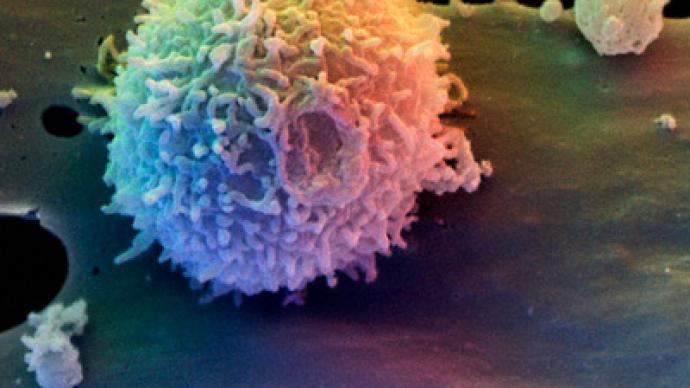Immune system's door unlocked: Science finds out why specific cells let HIV in

Scientists at George Mason University have carried out a groundbreaking new research project, finally revealing the reason why the deadly HIV virus targets only a specific kind of T-cell.
The new discovery may change the way the disease is tackled. The study, which was recently published online, will appear in October’s Journal of Biological Chemistry.It is already known in the scientific community that the human immunodeficiency virus (HIV) targets specific infection-fighting white blood cells called T-cells. However, innovative research has been carried out into different sub-groups of these T-cells, to work out why some are affected by the virus while others aren’t.The disease targets "memory" helper T-cells, which have previously encountered infections. This may have been through a previous illness or even vaccination. The disease does not target "virgin" helper T-cells, which have never previously encountered infection. The study’s main author, Weifeng Wang (PhD Biosciences ’12) pointed out that “HIV is able to kill most memory helper cells in just a few days.” This poses a great danger, as they support the body’s immune system by organizing forces to fight off infection. The death of high numbers of "memory" helper cells destroys the immune system, and eventually leads to the symptomatic stage of infection – acquired immunodeficiency syndrome (AIDS). The study demonstrates the different susceptibility of "memory" and "virgin" helper cells, looking at minuscule differences between them to discover why "memory" cells are specifically targeted. Both cell types appear to be very similar in structure. It was discovered that because "memory" cells, which are continually moving, draw in the virus through their momentum, this makes them more vulnerable and sensitive than "virgin" cells. The network of proteinous filaments inside the cells is known as its cytoskeleton, and it is these filaments that propel the cell into motion. Yuntao Wu, a George Mason University Professor of Microbiology and Infectious Diseases, explained that HIV could enter the "memory" cell more easily, but it had previously been unclear why. The cytoskeleton acts as a sort of barrier between the cell’s membrane and its nucleus, and it has been difficult to understand how the virus crosses it. The growing and shrinking of the cytoskeleton’s filaments gives the impression of movement, known as "treadmilling." Wu says that HIV exploits this "treadmilling" process, and likens the entry of the virus into the cell to a guest ringing a doorbell. He says that the virus uses a cell’s receptor to attach to it, saying that “when the virus touches that receptor it's like someone ringing the doorbell – someone comes out and opens the door.” The virus can then begin the "treadmilling" process to navigate its way along the cytoskeleton, towards the nucleus. He goes on to point out that “if the virus goes to naive cells, it cannot do it. Naive cells aren't sensitive enough. The cytoskeleton of these 'virgin' cells is different from the memory cells, and it is not easy for the virus to start the treadmilling process.”The virus is so difficult to tackle because it mutates very quickly. Wu says that while the body might remember one virus, “this guy changes his face so they don’t remember him. That’s why our immune system is not effective against HIV.”This has led scientists to shift the focus of potential treatment. They have decided on a new strategy that would involve using cells that the virus might depend on in order to exist, and then shutting them down. So, once the virus-guest is inside the cell-house, one might cut off its means of survival by ‘shutting down’ the ‘house.’ The difficult part has been identified as how the cells could be shut down, without damaging or killing other, healthy cells. The team is looking at existing drugs, such as those used to treat cancer, to slow down the disease’s migration. Wu and Wang carried out the study with the aid of four others. Wu is already highly respected for his work in the field, having patented a nucleic acid that destroys HIV-infected cells earlier this year, while Wang has spent the last six years researching why HIV attacks "memory" cells.














